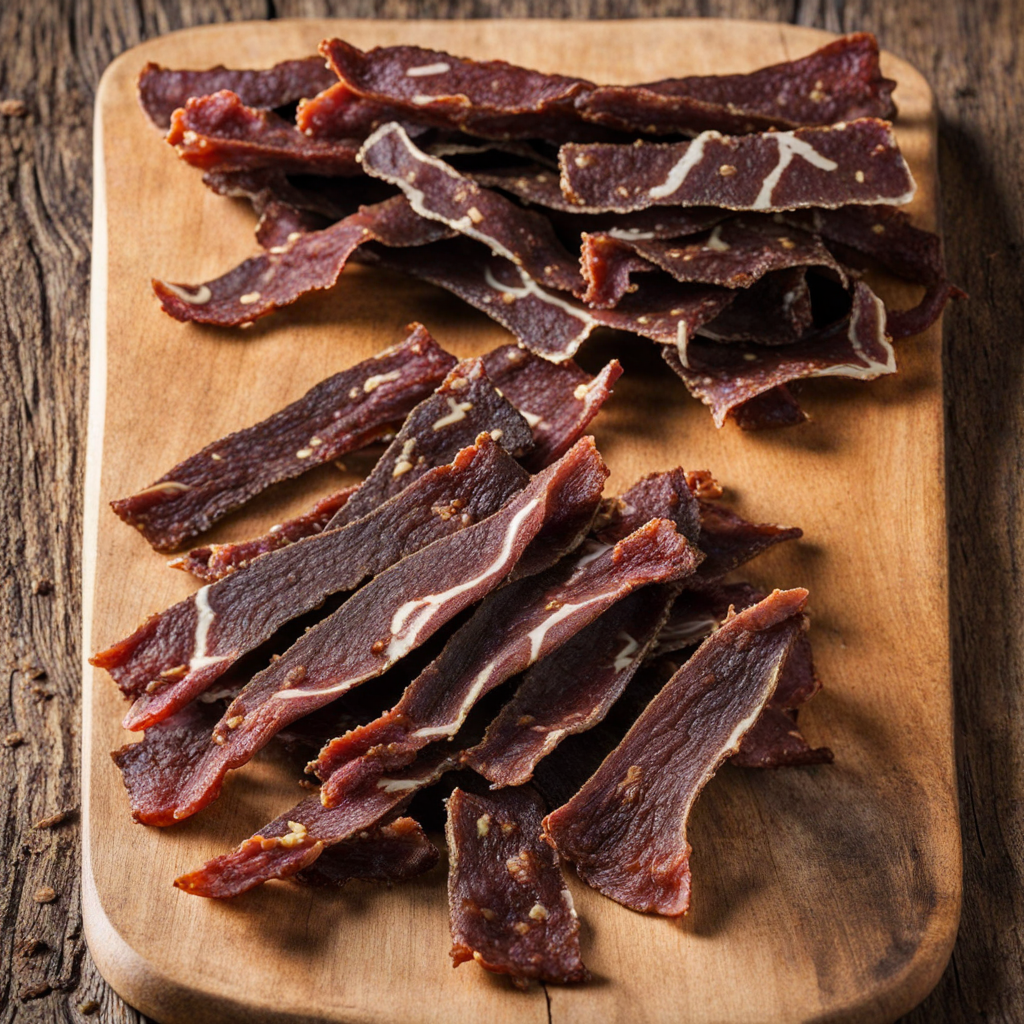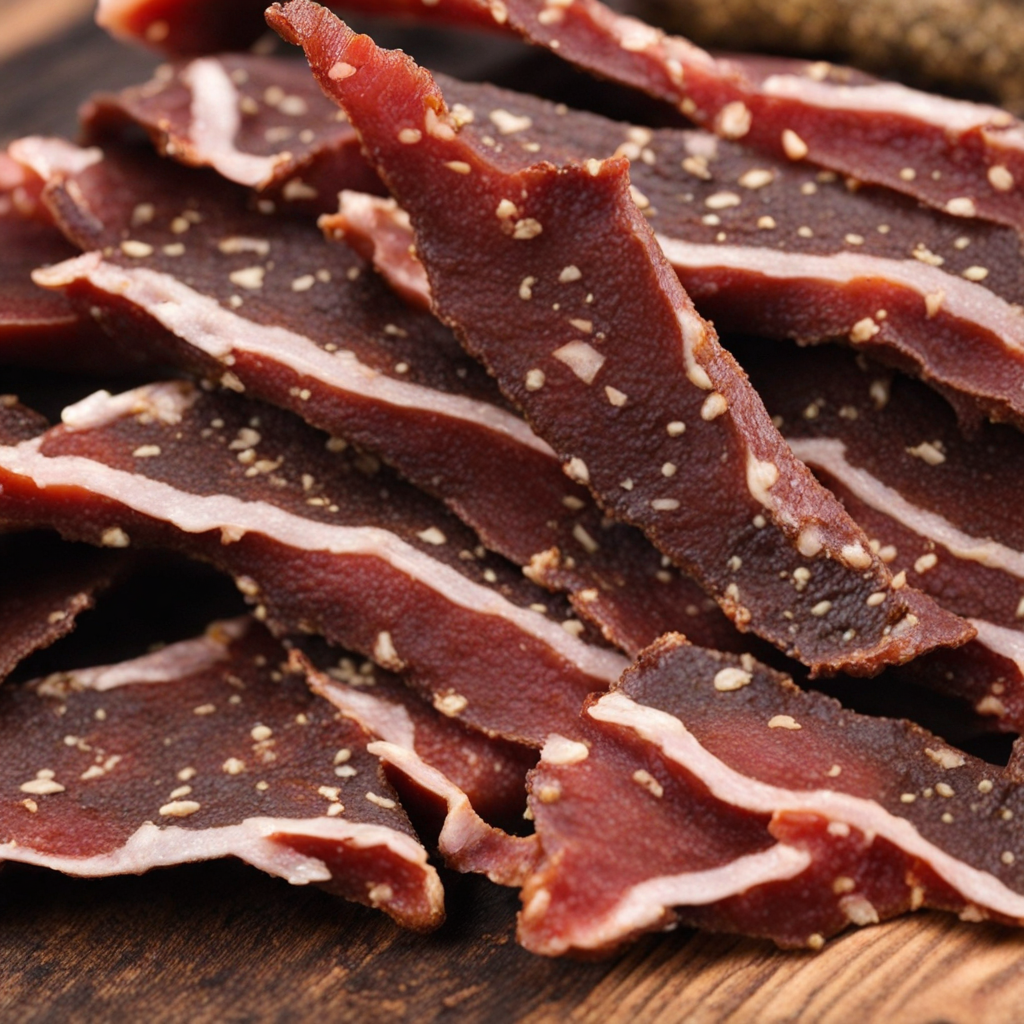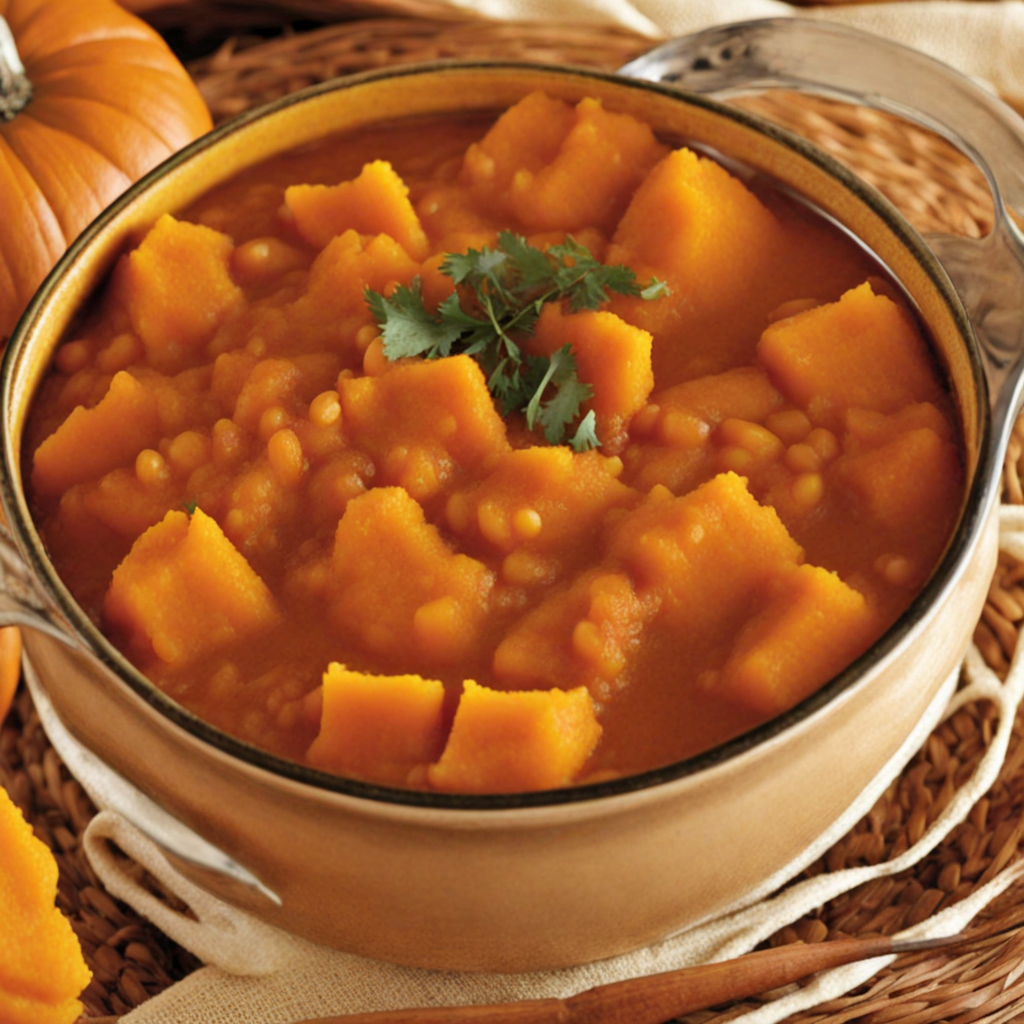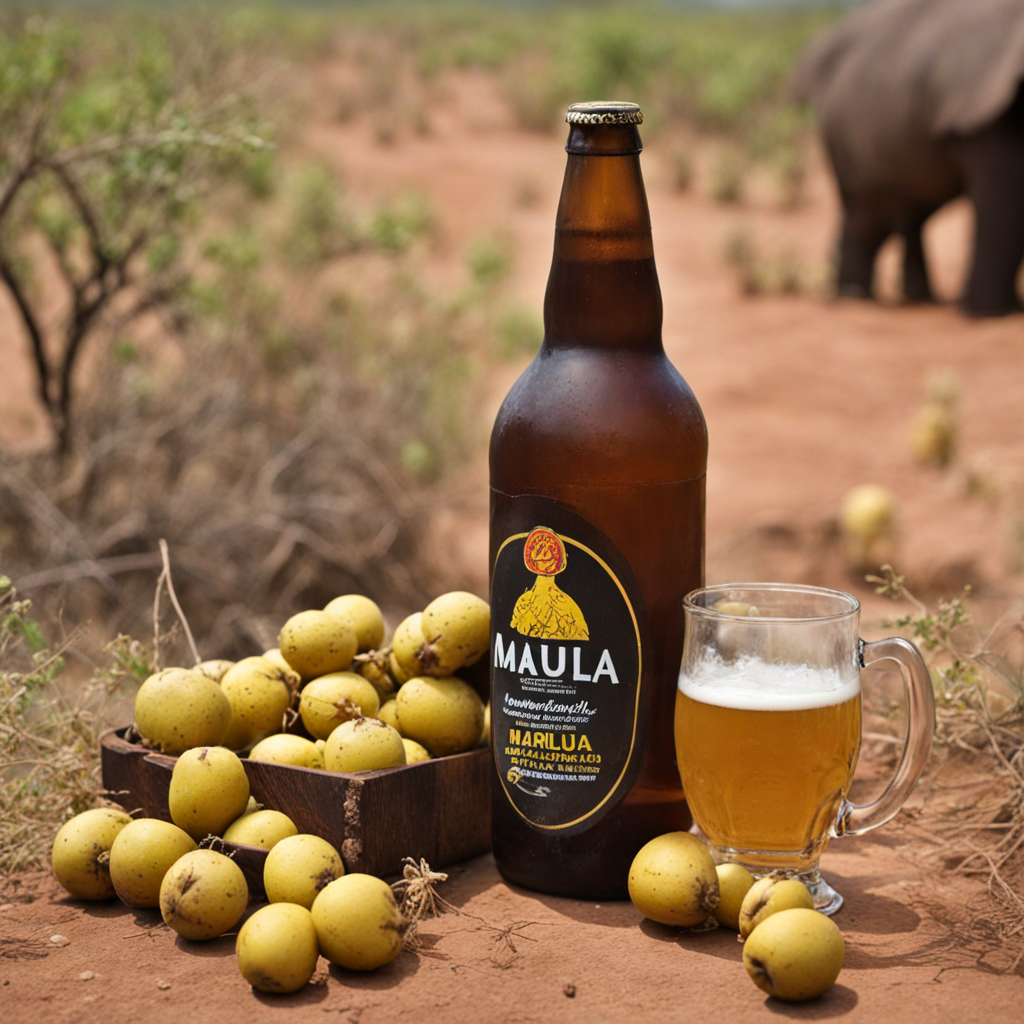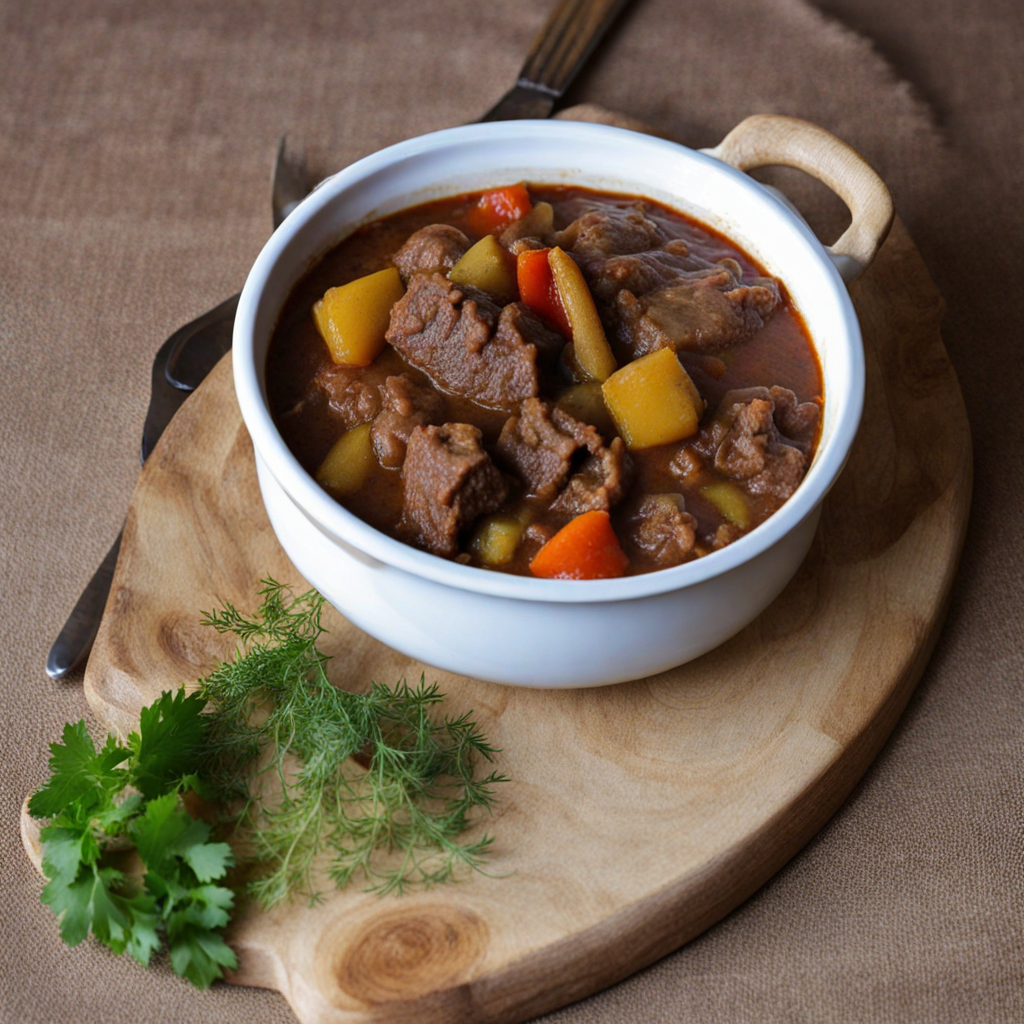Biltong
Biltong is a traditional dried meat snack originating from Southern Africa, and in Eswatini, it embodies the rich flavors and heritage of the region. This delectable treat is typically made from beef, although other meats such as game or ostrich can also be used. The meat is marinated in a mixture of vinegar and spices, which often includes coriander, black pepper, and salt, allowing it to absorb a medley of flavors before being air-dried. The drying process not only preserves the meat but also enhances its taste, resulting in a chewy texture that is both satisfying and addictive. Each bite of Biltong offers a complex flavor profile that balances the savory notes of the seasoned meat with a subtle tanginess from the vinegar. The spices lend a warm, aromatic quality that makes it an intriguing snack. In Eswatini, Biltong is often enjoyed as a protein-packed snack during social gatherings or outdoor adventures, making it a staple for both locals and visitors seeking a taste of authentic Swazi culture. Its versatility allows it to be paired with various accompaniments, such as cheese or nuts, for a gourmet experience. When you indulge in Biltong, you're not just savoring a snack; you're experiencing a piece of Eswatini's culinary heritage. The process of making Biltong is a labor of love, steeped in tradition, and the end product reflects the craftsmanship of those who prepare it. Whether enjoyed on its own or as part of a charcuterie board, Biltong is sure to tantalize your taste buds and leave you craving more of this unique and flavorful delicacy.
How It Became This Dish
The History of Biltong: A Culinary Journey from Eswatini #### Origins: The Birth of Biltong Biltong, a dried meat delicacy, is deeply rooted in Southern African culinary traditions, with its origins tracing back to the indigenous peoples of the region. While its most recognized association is with South Africa, the practice of drying and curing meat spans across various cultures in Southern Africa, including Eswatini (formerly Swaziland). The word "biltong" comes from the Dutch words "bil" (meaning "buttock" or "thigh") and "tong" (meaning "strip" or "tongue"), a reflection of its European influences during the colonial era. In Eswatini, as in other parts of Southern Africa, the preservation of meat has been a necessity shaped by the region's climate. Historically, the indigenous communities relied on natural methods of food preservation to survive through long periods, particularly during dry seasons when fresh food was scarce. The process of making biltong, which involves salting, spicing, and air-drying the meat, was a practical solution to the challenges of food storage. Traditionally, game meat such as kudu, impala, and other wild animals were used, showcasing the connection between the land and its people. #### Cultural Significance Biltong is more than just a method of preserving meat; it is a cultural icon that embodies the traditions and heritage of the people of Eswatini and neighboring regions. In Eswatini, biltong is often enjoyed during social gatherings, festivities, and communal feasts. It serves as a symbol of hospitality, with families offering biltong to guests as a gesture of warmth and welcome. The preparation of biltong has also become a communal activity, often passed down through generations. The art of making biltong includes not only the practical skills of butchering and curing but also the knowledge of selecting the right cuts of meat, choosing appropriate spices, and understanding the drying process. This knowledge is integral to the cultural identity of the Swazi people, as it reflects their connection to their land, traditions, and communal life. Moreover, biltong is often associated with the vibrant markets of Eswatini, where local vendors sell their handmade products. These markets are not just places for commerce; they are social hubs where people gather to exchange stories, share laughter, and celebrate their cultural heritage. Biltong has thus become a symbol of community and shared experiences, transcending its role as mere sustenance. #### The Development of Biltong Over Time As Eswatini and its neighboring regions evolved through colonial encounters and globalization, so too did the practices surrounding biltong. The arrival of European settlers in the 17th century brought new influences to the region's culinary landscape. The Dutch settlers, in particular, played a crucial role in the popularization and standardization of biltong, blending their own culinary traditions with those of the indigenous peoples. During the colonial period, biltong became an essential source of protein for travelers, explorers, and soldiers venturing into the interior of Southern Africa. Its portability and long shelf life made it an ideal food for those on long journeys. As a result, the production of biltong expanded beyond local communities to meet the needs of a growing market. The 19th century saw the establishment of commercial biltong production, with larger-scale operations emerging to cater to both local and international demand. This commercialization led to variations in the preparation methods, with some producers opting for different spices, marinades, and drying techniques. The traditional methods, however, continue to be cherished by many, particularly among those who prioritize authenticity and the preservation of cultural practices. In contemporary Eswatini, biltong has undergone further transformations, adapting to modern tastes and dietary preferences. While traditional recipes remain popular, innovative variations have emerged, including biltong made from different types of meat such as beef, ostrich, and even vegan alternatives. This evolution reflects not only changing consumer preferences but also the globalization of culinary traditions, where influences from around the world intersect to create new flavors and experiences. #### The Modern Biltong Experience Today, biltong is celebrated not only in Eswatini but across Southern Africa and beyond. It has gained recognition as a nutritious snack, rich in protein and low in carbohydrates, making it a popular choice among health-conscious consumers. The rise of online markets and food delivery services has also facilitated the spread of biltong beyond its traditional borders, allowing people worldwide to experience this unique delicacy. In Eswatini, artisanal biltong makers continue to thrive, creating products that honor traditional methods while embracing modern culinary trends. Local festivals and food events often feature biltong tastings, where visitors can sample various styles and flavors, reinforcing its status as a beloved national treasure. Moreover, the appreciation for biltong has sparked interest in the broader culinary heritage of Eswatini. As more people seek to understand the cultural significance of this dish, there is a growing recognition of the importance of preserving traditional food practices and supporting local producers. Biltong has thus become a vehicle for cultural exchange, inviting people to explore the rich history and vibrant communities of Southern Africa. #### Conclusion: A Culinary Legacy The history of biltong in Eswatini is a testament to the resilience, creativity, and communal spirit of its people. From its humble beginnings as a method of meat preservation to its status as a cultural icon, biltong embodies the essence of Southern African cuisine. As it continues to evolve and adapt in response to changing times, biltong remains a cherished symbol of heritage, community, and the shared love of food. In a world where culinary traditions often face the threat of homogenization, biltong stands as a proud example of how food can connect us to our history and to each other. Whether enjoyed during a family gathering, at a bustling market, or as a snack on the go, biltong is more than just a dried meat delicacy; it is a celebration of culture, community, and the enduring legacy of the people of Eswatini.
You may like
Discover local flavors from Eswatini


